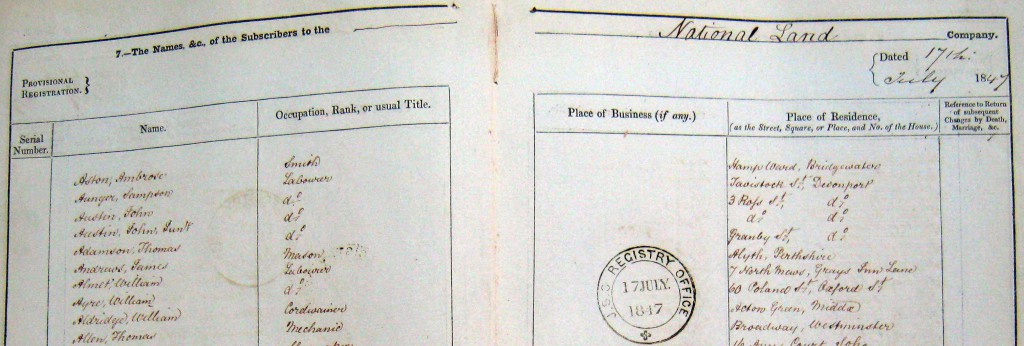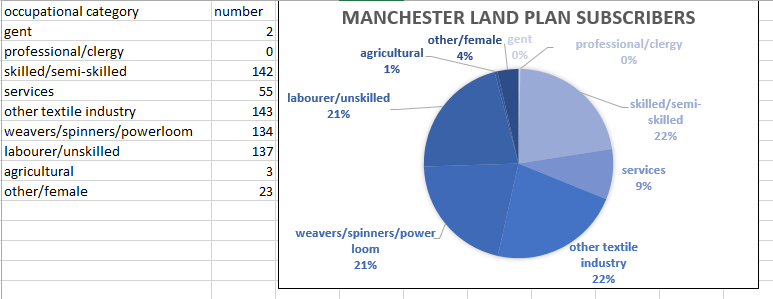The subscription lists of the Chartist Co-Operative Land Company, 1847, are in the Board of Trade Records in the National Archives.

Mark Crail’s Chartist Ancestors site with the table of Manchester subscribers and Jamie Bronstein’s excel files of other towns’ subscribers: http://www.chartists.net/chartist-land-plan/chartist-land-plan-1845-50/
Map will follow shortly once I’ve found all the addresses!
Here is the initial map of the c.300 addresses I have been able to locate:
Occupations of the 639 Manchester and Salford subscribers:

- 43% were employed in the textile industry (categories ‘other textile’ and weavers, powerloom weavers, and spinners).
- 22% I have classed as skilled or semi-skilled, e.g. tailors (56); shoemakers (23); coachmakers (3), etc. We know that these trades were active in Chartism because there were separate tailors, and boot and shoemakers’ branches in Manchester who nominated representatives to the general convention.
- The other large proportion (21%) were identified as labourers.
- 9% worked in what I’ve called services = bakers, grocers, porters.
- There were two people classed as ‘gent': David Schofield of Every Street, Ancoats; and John Francis of Bailey Street. I need to find out more about these two men.
- There were only about half a dozen female subscribers, for example, Mary Bailey, a housewife of 61 Ainsworth Street; Elizabeth Garrard, a spinner of Great Ancoats; Sarah ‘Greatorex’, described as a domestic of Great Ancoats, and Jane Gee, a domestic of 3 Lees Street, who is listed in the 1841 census as aged 45 (therefore aged about 51 at the time of her subscription).
We should take these occupations with a little caution, as it’s not certain whether these were given by the workers themselves (who may also have had other employments) or the person collecting the subscriptions. I’ve also classed them very roughly according to a simplified schema, which cannot take into account the different gradations of class and occupation or example among skilled workers or among textile workers.
